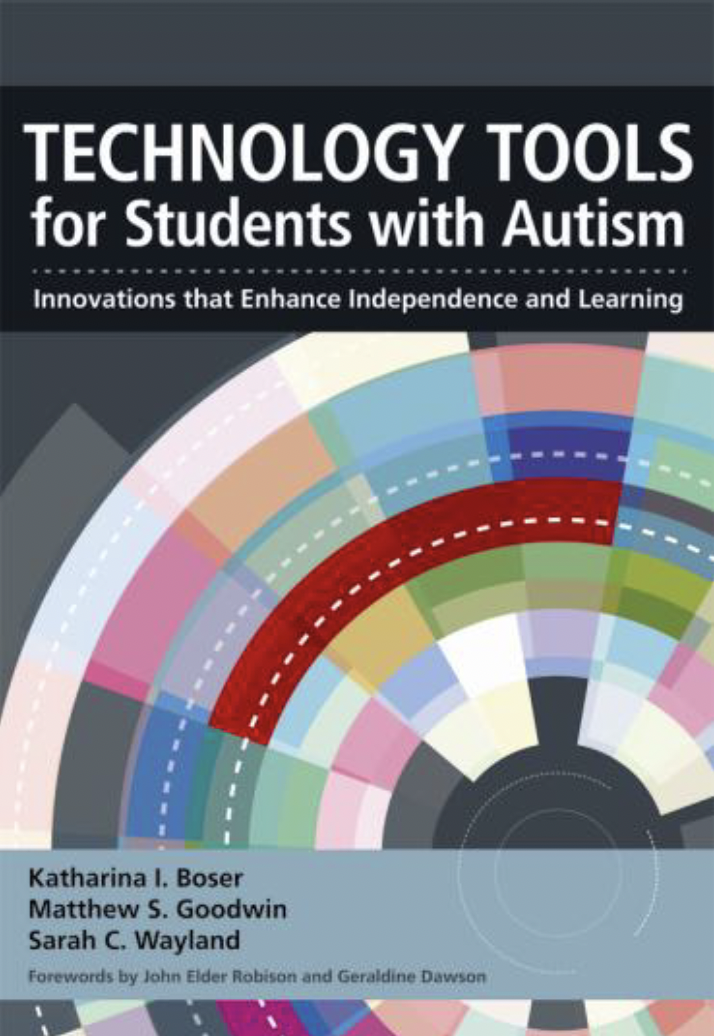Technology Tools for Students with Autism: Innovations that Enhance Independence and Learning
Katharina I. Boser, Ph.D., Matthew S. Goodwin, Ph.D., & Sarah C. Wayland, Ph.D. (Editors)
Technology holds great promise for helping students with autism learn, communicate, and function effectively in the modern world. Start leveraging that power today with this forward-thinking book, your in-depth guided tour of technologies that support learners with autism and help them fully participate in their classroom and community. You’ll learn about readily available technologies you can use right now—from apps to video modeling—and explore next-wave innovations that will help shape the future of autism intervention, such as therapeutic robots and advanced virtual reality technologies. You’ll also get critical guidance on how to select the appropriate technology for your needs, weave technology into a universal design for learning framework, and conduct effective professional development so teachers make the most of new tools and strategies.
Discover technologies that help:
- support the overall learning of children on the autism spectrum
- teach social skills and support emotion regulation through independent data collection
- develop executive function strategies and improve flexibility, memory, and transitions
- boost literacy and language skills
- support young adults’ transition to the workplace
- make data collection and program evaluation more effective and efficient
- strengthen teacher training programs enhance use of evidence-based practices, and
- enhance use of evidence-based practices.
Explore the benefits of technologies like:
- apps for education, communication, behavior regulation, and more
- video modeling
- language processing software
- emotional regulation & sensing technologies
- interactive learning software to improve feedback and metacognition
- text-to-speech & speech to text software
- e-readers and tablets with integrated multimedia
- and more
Praise for Technology Tools for Students With Autism
“A cutting-edge text that examines the potential for technology to transform learning experiences and communication for youth with disabilities and their families.” –Peter E. Leone, Ph.D. Department of Counseling, Higher Education, and Special Education, University of Maryland
“Covers the range of technology use for individuals with autism . . .The authors have done a real service by consolidating this information into one volume that is both readable and research-based.” –Pat Mirenda, Ph.D. University of British Columbia
“I am in awe of this profoundly important body of work. Technology is revolutionizing the lives of all individuals with autism. This book will accelerate their access to state-of-the-art resources.” –Kathleen Quill, Ed.D., BCBA-D Autism Institute
“This outstanding resource is sure to be part of teacher preparation and ongoing professional development for many years to come.” –Rich Weinfeld Director, Weinfeld Education Group, co-author of 5 books about student with special needs including, ‘Smart Kids with Learning Difficulties’
“Created by an outstanding team of experts, this much-needed collection of information on the uses of technology for individuals with autism will be welcomed by families and educators everywhere.” –Portia Iversen co-founder, Cure Autism Now foundation (CAN) and the Autism Genetic Resource Exchange (AGRE)
“Rich with not only the power of technology but also the voices of individuals with autism, in all their variety . . . The authors of this book highlight the power of new technologies not only to transform the lives of individuals with autism, but also to transform the environments in which they will live and learn.” –David Rose Chief Education Officer, CAST
“Provides a comprehensive foundational understanding as well as practical technology solutions for individuals with autism spectrum disorder (ASD) . . . a necessary read for higher education faculty, teachers, parents, and related professionals who work with individuals diagnosed with ASD.” –James Basham, Ph.D. University of Kansas
“Simply great! This first textbook on the assistive technologies belongs on the shelf of everyone interested in autism.” –Sven Bolte, Ph.D. Professor of Child & Adolescent Psychiatric Science, Director of the Center for Neurodevelopmental Disorders at Karolinska Institutet (KIND)
